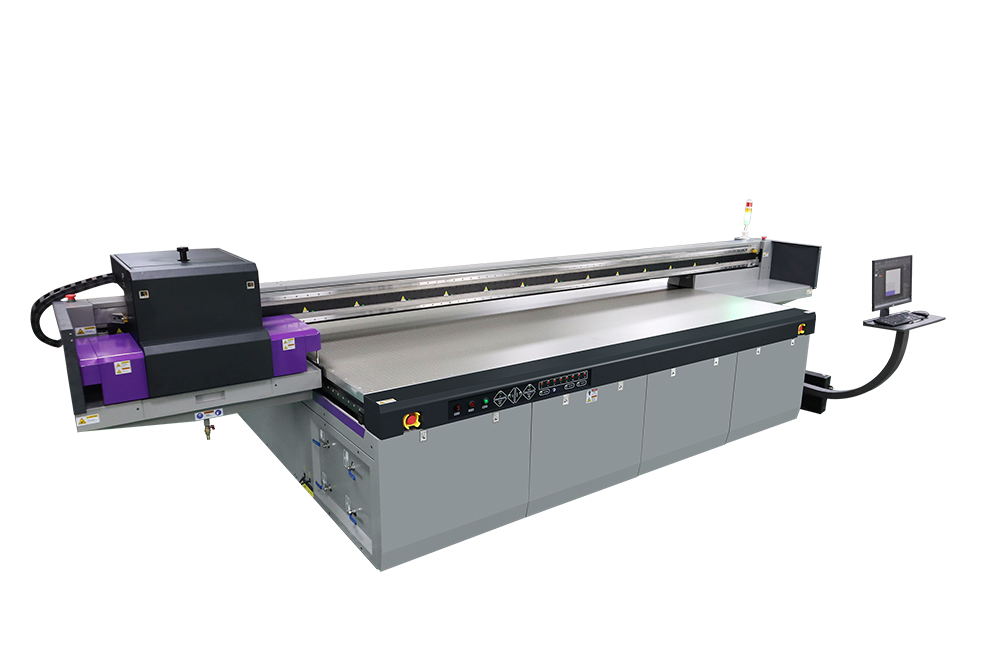UV Flatbed Printer: The Basics of UV Curing Technology
UV Flatbed Printer: The Basics of UV Curing Technology
In the realm of digital printing, UV flatbed printers have emerged as a game-changer, revolutionizing the way images and designs are transferred onto various substrates. This technology, characterized by its use of ultraviolet (UV) light to cure or dry ink instantly, offers unparalleled advantages in terms of speed, quality, and versatility. This article delves into the basics of UV curing technology, exploring its mechanisms, applications, benefits, and considerations for those looking to harness its power in their printing operations.

Understanding UV Curing Technology
UV curing is a process where specially formulated inks are exposed to UV light, causing them to solidify or ‘cure’ immediately. This chemical reaction transforms liquid ink into a dry, durable film that bonds securely to the substrate. The key component in this technology is the UV ink, which contains photoinitiators—chemical compounds that react when exposed to UV radiation, triggering the curing process.
The UV light source, typically consisting of high-intensity LED or mercury vapor lamps, emits radiation in the ultraviolet spectrum, primarily at wavelengths between 200 and 400 nanometers. This radiation penetrates the ink layer, activating the photoinitiators and initiating a polymerization reaction. As a result, the ink molecules link together, forming a solid, cross-linked network that is resistant to abrasion, chemicals, and fading.
Mechanisms of UV Curing
Initiation: The UV light activates the photoinitiators in the ink, which absorb the radiation energy and undergo a chemical transformation.
Propagation: Activated photoinitiators then initiate a chain reaction, causing the ink’s monomers and oligomers to react and form long polymer chains.
Termination: The polymerization reaction continues until all reactive species are consumed, leading to the formation of a solid, cured ink film.
This rapid transformation from liquid to solid state is what sets UV curing apart from traditional drying methods, such as heat or air evaporation, which can take significantly longer and may not achieve the same level of durability.
Applications of UV Flatbed Printers
UV flatbed printers are versatile machines capable of printing on a wide array of materials, including plastics, glass, metal, wood, ceramics, and more. Their ability to cure ink instantly makes them ideal for applications where durability, resistance to environmental factors, and high-quality output are crucial. Common applications include:
Signage and Graphics: Producing vibrant, weather-resistant signs and graphics for outdoor use.
Packaging: Printing directly onto various packaging materials, enabling custom designs and branding.
Decorative Printing: Enhancing products with unique patterns or images, such as phone cases, laptop covers, or furniture.
Industrial Applications: Manufacturing components with printed markings, serial numbers, or functional coatings.
Benefits of UV Curing Technology
Instant Drying: UV inks cure immediately upon exposure to UV light, allowing for faster production cycles and reduced handling time.
Durability: Cured UV inks form a tough, resilient film that is resistant to scratching, fading, and chemicals, ensuring long-lasting prints.
Environmental Advantages: UV curing is a solvent-free process, reducing VOC emissions and making it more environmentally friendly.
Versatility: The ability to print on diverse materials expands creative possibilities and application scopes.
High Resolution and Detail: UV flatbed printers can achieve high-resolution prints with sharp details and vibrant colors.
Considerations and Challenges
While UV curing technology offers numerous benefits, there are also considerations and challenges to be aware of:
Initial Investment: UV flatbed printers and their associated equipment can have a higher upfront cost compared to traditional printers.
Ink Costs: UV inks are generally more expensive than conventional inks due to their specialized formulation.
Operator Safety: Exposure to UV light can be harmful. Proper safety measures, such as wearing protective gear and ensuring adequate ventilation, are essential.
Maintenance: Regular maintenance of the UV light source is necessary to ensure consistent curing quality and extend equipment lifespan.
Conclusion
UV flatbed printers equipped with UV curing technology have transformed the printing industry, enabling the production of high-quality, durable prints on a wide range of materials. The instant curing capability, coupled with the versatility and environmental advantages, makes this technology an attractive option for businesses seeking to elevate their printing capabilities. However, it’s important to carefully consider the initial investment, ongoing costs, and operational requirements before embracing UV curing technology. With proper planning and implementation, UV flatbed printers can unlock new possibilities in printing, driving innovation and enhancing productivity across various industries.
